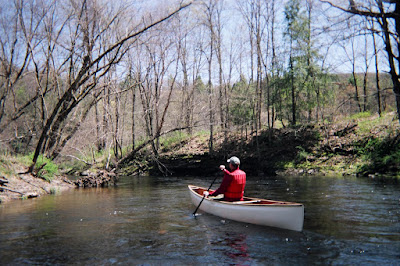

VOLUNTEERS NEEDED FOR OPERATION RIVER BRIGHT
Volunteer boaters are needed on Saturday, June 9 to help remove litter from the river accesses, shorelines and islands along targeted sections of the Lower Delaware River between Easton-Phillipsburg and Riegelsville. Sign-in and shuttle begins at 8:00 AM and the cleanup will last until approximately 2 PM. Pre-registration is required (see below).
Operation River Bright offers a wonderful opportunity for recreational paddlers, fishermen, local residents, and organizations to give something back to the river by helping clean-up unsightly trash and debris, much of it left by the recent floodwaters.
To register and/or learn more about River Bright simply respond to this email. When registering please indicate what kind of boat you will be using. Further details about meeting time and place, shuttle arrangements and other details will be provided to registered volunteers.
The greatest need is for paddlers with canoes, but kayakers are also welcome. All paddlers will be required to wear a PFD while underway. We are also seeking a few powerboats and boaters to help out.
Operation River Bright is an American Canoe Association (americancanoe.org) sanctioned event, which means that we always follow their safety guidelines at all times. In the interest of safety and liability concerns we have found it is preferable to conduct river cleanups with people who have some degree of experience paddling on the river (with as many experienced paddlers as possible in the mix). In addition to a safer and more enjoyable experience, we accomplish more! In that regard I will once again offer a training day for the NJ Youth Corps members, who have been wonderful partners with Operation River Bright over the past several years.
Delaware River Greenway Partnership began sponsoring river cleanups in 1998 and continues to serve as the main event organizer. Other event participants and/or sponsors will include the New Jersey Youth Corps of Phillipsburg, American Rivers, National Canoe Safety Patrol - Lower Delaware Chapter, Mohawk Canoe Club, Lazy River Outpost, National Park Service, and the Lower Delaware Wild & Scenic River Management Committee. We will be adding more organization sponsors in the coming weeks.
I have paddled the river several times this past winter and with the leaves down it was even more evident that there is an enormous amount of trash on its islands and banks. One of the worst areas that can be found along the 200-mile non-tidal river is the 10-mile stretch between Easton-Phillipsburg and Riegelsville. It will take a sustained effort over the next few years to put a dent in the volume of the trash that blights the Lower Delaware National Wild and Scenic River. Won’t you please give something back to the river and help Operation River Bright end this river blight?
Let me know if you can help.













